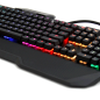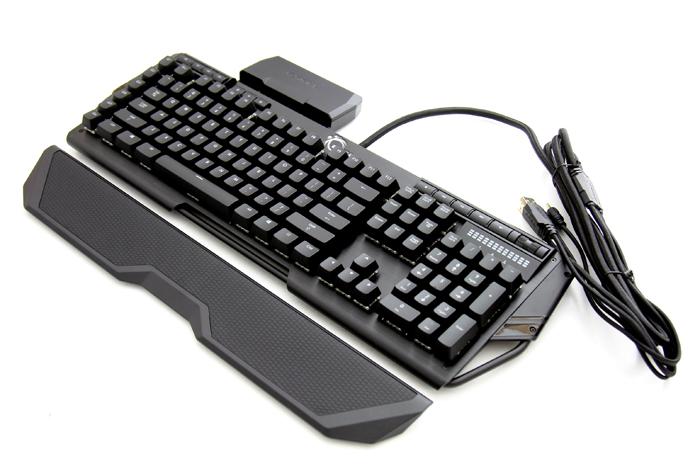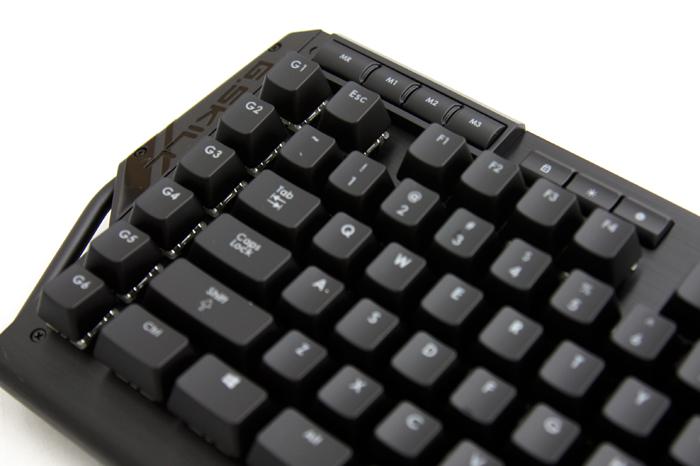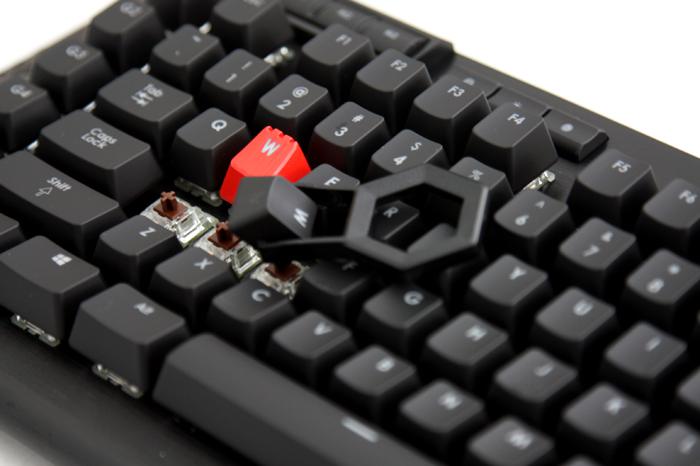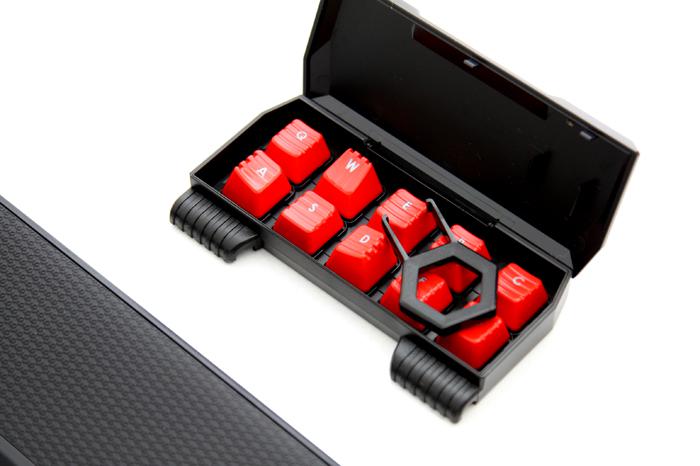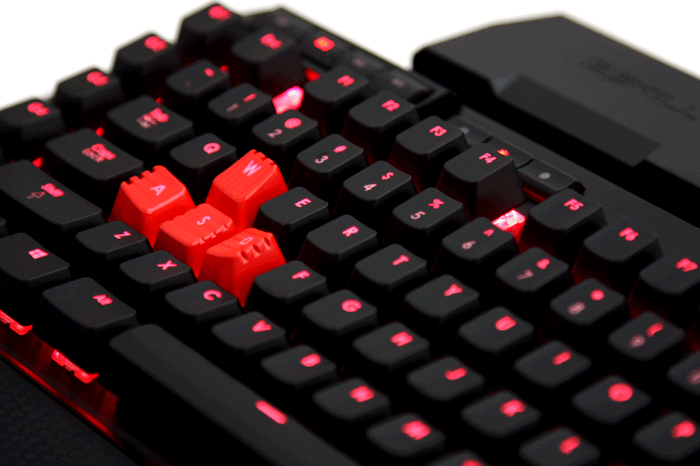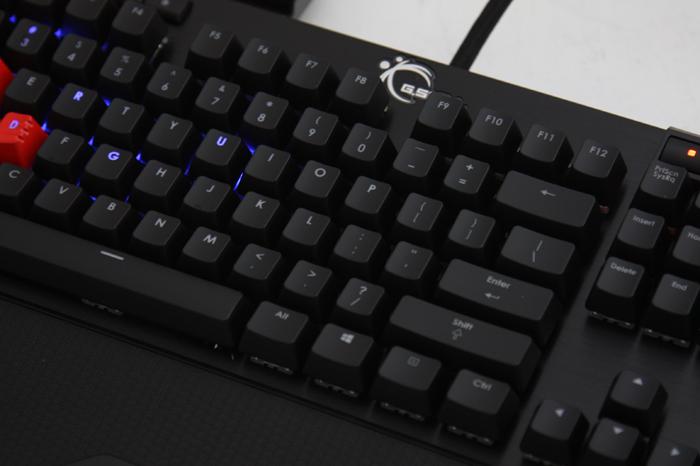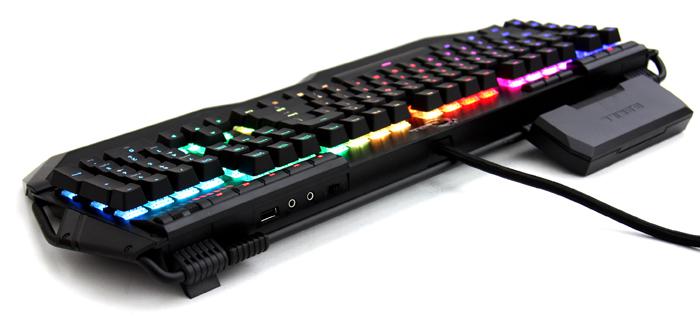Mechanical Cherry Keys
All keys are mechanical, in our case making use of Cherry MX switches. The idea behind mechanical switches is that they give a key press a more perceptible feel than the standard rubber membrane used in cheaper keyboards. These keyboards are built for durability and gaming experience and include gaming orientated features such as three mode hotkeys, six dedicated macro keys and thus the extra lighting modes. On-board memory and software supplied let you adjust per-key lighting, macro setup, timer setting, key delay and repeat rate, polling rate and various other settings. The KM780 RGB measures 518mm long, 172mm deep is 48mm thick. With the palm rest attached the keyboard is 228mm deep.
Check that, MR Mode 'Macro Recording' keys, M1, M2 and M3 mode and G profile keys, a windows lock key and same set to multimedia keys. Hmm, does that remind you of another brand already? Yeah we are pretty sure that both G.Skill and Corsair use the very same ODM. Gamers seem to prefer mechy's very much over dome based keys and ever since the past year or two mechanical keyboards have been on the rise. The keyboard registers ALL keys pressed at once, as such this is full key rollover.
The RGB Cherry MX switches can withstand over 50 million key presses. Each key switch is mounted directly onto a top metal (aluminum) plate that ensures structural rigidity, topped with a translucent ABS laser-etched keycap to enable back-lighting. Back-lighting on a Cherry MX switch is much sharper than that of a membrane keyboard because each key is lit by an individual LED and not in an array. This means that if the user removes the keycap, he or she should see an LED directly under it that maximizes the lighting effect. Due to the design of the Cherry MX switch, there is only room for a single 3mm LED that could mount directly onto the key switch (side view above). Since the minimum size for a RGB LED requires 5mm, this meant that all manufacturers who incorporated LED back-lighting onto a Cherry MX Switch would be limited to a single color without any type of adjustments. Even if a user wants to customize the type of LED used in the switch, it would be extremely difficult because of the way in which the key switch is mounted to the PCB.
Our keyboard houses Brown Cherry MX switches as you can see in the photo. You however get to choose from the Blue and Red model as well. There are actually four types in general with the following specifications:
-
Cherry MX Black - Linear switch with Actuation Force: 60g (40g-80g overall)
-
Cherry MX Brown Switches - Tactile Switch with Actuation Force: 45g (55g Peak Force)
-
Cherry MX Blue Switches - Tactile & Clicky with Actuation Force: 50g (60g Peak Force)
-
Cherry MX Red Switches - Linear Switch with Actuation Force: 45g
New is also per-key adjustable lighting, using RGB LEDs, so that you can customize which keys are lit, according to the game you’re playing versus a color or animation and even versus macro or recorded action.
The included custom gaming keycaps offer a good feel. Personally, I don't particularly like the look or feel of these custom key caps as I do not like the contouring and well, they are very slick feeling. I'll stick to the normal factory installed ones, but it's good to have that option.
The Cherry MX mechanical switches are intended for for fast, efficient gaming action with 45g actuation force. The keys are curved a little and are fairly slippery which gives them a unique feel. But since we see them activated here, let's talk about the LED back-lighting a little, shall we?
